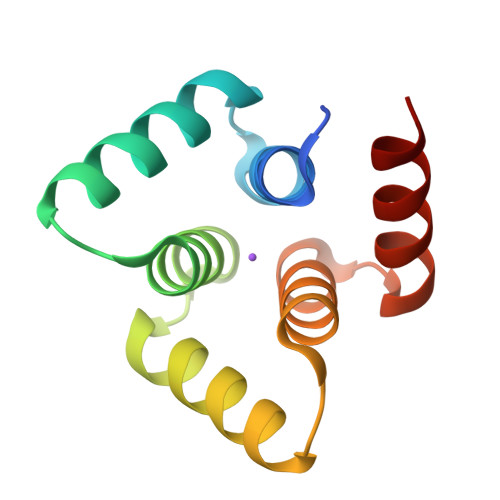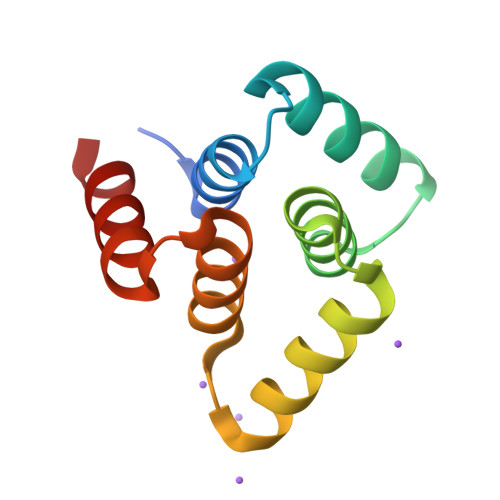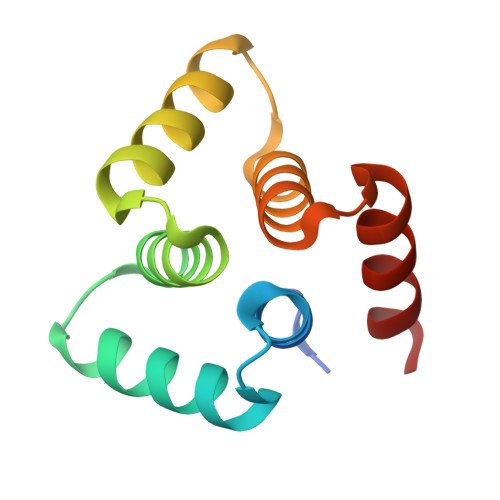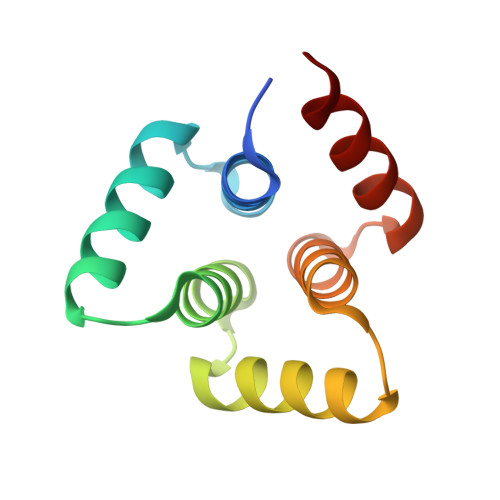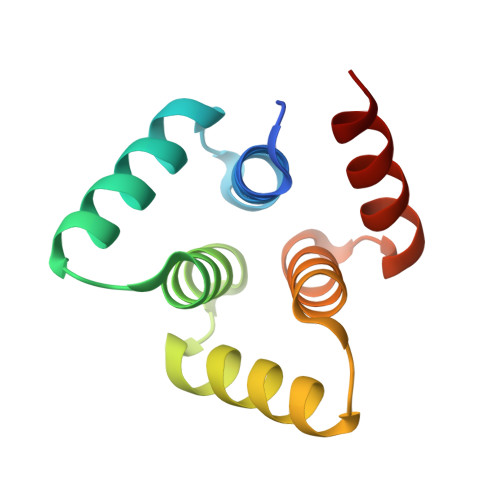Rational design of alpha-helical tandem repeat proteins with closed architectures.
Doyle, L., Hallinan, J., Bolduc, J., Parmeggiani, F., Baker, D., Stoddard, B.L., Bradley, P.(2015) Nature 528: 585-588
- PubMed: 26675735
- DOI: https://doi.org/10.1038/nature16191
- Primary Citation of Related Structures:
4YXX, 4YXY, 4YXZ, 4YY2, 4YY5, 5BYO - PubMed Abstract:
Tandem repeat proteins, which are formed by repetition of modular units of protein sequence and structure, play important biological roles as macromolecular binding and scaffolding domains, enzymes, and building blocks for the assembly of fibrous materials. The modular nature of repeat proteins enables the rapid construction and diversification of extended binding surfaces by duplication and recombination of simple building blocks. The overall architecture of tandem repeat protein structures--which is dictated by the internal geometry and local packing of the repeat building blocks--is highly diverse, ranging from extended, super-helical folds that bind peptide, DNA, and RNA partners, to closed and compact conformations with internal cavities suitable for small molecule binding and catalysis. Here we report the development and validation of computational methods for de novo design of tandem repeat protein architectures driven purely by geometric criteria defining the inter-repeat geometry, without reference to the sequences and structures of existing repeat protein families. We have applied these methods to design a series of closed α-solenoid repeat structures (α-toroids) in which the inter-repeat packing geometry is constrained so as to juxtapose the amino (N) and carboxy (C) termini; several of these designed structures have been validated by X-ray crystallography. Unlike previous approaches to tandem repeat protein engineering, our design procedure does not rely on template sequence or structural information taken from natural repeat proteins and hence can produce structures unlike those seen in nature. As an example, we have successfully designed and validated closed α-solenoid repeats with a left-handed helical architecture that--to our knowledge--is not yet present in the protein structure database.
Organizational Affiliation:
Division of Basic Sciences, Fred Hutchinson Cancer Research Center, 1100 Fairview Avenue N., Seattle, Washington 98109, USA.









